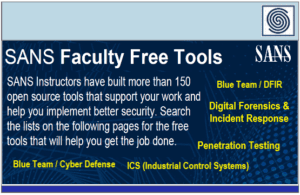Source: hackread.com – Author: Owais Sultan.
Protecting sensitive data nowadays should be a top priority for businesses of all sizes. Data breaches and cyber threats are no longer occasional occurrences but constant risks that require ongoing attention. The global cost of cyberattacks is expected to hit $9.5 trillion in 2024, largely fueled by ransomware, phishing, and data breaches. To combat these threats, companies need robust, continuous security measures that adapt as threats evolve.
Traditional security measures, while effective to an extent, often involve manual processes that can be inconsistent, leaving gaps in protection. Automation is changing the landscape as it allows businesses to protect data more effectively through real-time encryption and automated security audits.
Automating data security processes means sensitive information is consistently protected, and security status is constantly monitored without relying solely on human effort. Automation, combined with other technologies like machine learning, offers businesses the ability to stay one step ahead.
Let’s discuss more on this below:
Using Robotic Process Automation
Robotic process automation (RPA) has become a valuable tool in automating repetitive tasks across various business functions, and data security is no exception. RPA can handle tasks such as data encryption, access control management, and audit preparation, which are critical in maintaining a secure data environment. Thanks to RPA, businesses can create automated workflows that perform these tasks quickly and consistently, eliminating human error and freeing up security teams to focus on more complex challenges.
One major advantage of RPA in security is its ability to run 24/7 without interruption. Tasks that are time-consuming or repetitive for human employees can be efficiently managed by RPA, creating a more consistent layer of protection.
Additionally, it can help businesses stay compliant with data regulations by automatically recording security actions and updates. Instead of relying on team members to complete these steps manually, RPA executes them precisely and on schedule.
Automating Data Encryption
Data encryption is one of the most important elements in a data security strategy, protecting sensitive information by converting it into an unreadable format. With encryption, data remains secure even if accessed by unauthorized users.
However, manually encrypting data across all systems and applications is not only time-consuming but also prone to inconsistencies. Automating the encryption process enables businesses to apply real-time protection to data without the need for constant manual intervention.
Automated encryption solutions can detect sensitive data as it’s created or transferred and immediately encrypt it, adding a critical layer of security. This real-time approach is particularly valuable for businesses that handle large volumes of data daily. With automated encryption, businesses reduce the risk of accidental exposure, keeping data consistently protected, whether it’s at rest or in transit. Automation also allows companies to apply encryption uniformly across their systems so there are no weak points that hackers can exploit.
Implementing Automated Security Audits
Security audits play an essential role in identifying vulnerabilities, maintaining compliance, and ensuring data integrity. However, conducting regular audits can be a challenge for companies, as it requires significant time and resources.
Automated audit tools streamline this process, allowing for continuous auditing that keeps an eye on security status in real time. Instead of waiting for scheduled audit periods, automated audits can provide up-to-date reports on security gaps and compliance status.
Real-time auditing brings numerous benefits, especially for companies in highly regulated industries. Automated audits allow businesses to spot potential issues early, minimizing the risk of non-compliance and giving them a proactive approach to risk management. With continuous monitoring, teams can quickly act when issues arise, addressing vulnerabilities before they become major threats. Automated security audits give businesses the confidence that their security measures are consistently monitored and aligned with industry standards, all while reducing the workload on internal teams.
Utilizing Machine Learning for Anomaly Detection
Machine learning (ML) adds another layer of sophistication to automated security audits by identifying patterns and unusual activities that might indicate a security threat. Unlike traditional methods, ML algorithms can learn from data over time, recognizing what constitutes typical behaviour and quickly spotting anomalies that could signal unauthorized access or suspicious actions. This type of real-time detection helps teams stay aware of issues that may otherwise go unnoticed in large datasets.
Incorporating ML into security audits enables businesses to gain a proactive approach to data protection. As soon as an anomaly is detected, ML-powered tools can alert the security team to investigate before any real damage is done. This level of insight is especially valuable in industries handling sensitive data, where even minor incidents could have serious consequences. Automated anomaly detection keeps teams informed, enabling swift action and strengthening the overall security framework.
Improving Data Access Control
Statistics show that over 70% of organizations with access control experience fewer than five major incidents annually. Access control is a fundamental element of data security as it determines who can view or modify sensitive information within an organization. Automated access control systems make this process more secure by continuously monitoring and adjusting permissions based on predefined rules. For instance, when an employee changes roles or leaves the company, automated systems can immediately update or revoke access rights, reducing the risk of unauthorized access.
Automating access control brings consistency and reduces human error, which can often lead to accidental exposure of sensitive information. By leveraging automated systems, companies create a more adaptable and secure environment where access is restricted to those who genuinely need it. This method also simplifies compliance with regulatory standards that require strict access controls. In this way, businesses can manage data access dynamically and respond quickly to personnel or organizational changes.
Automated Reporting
Automated reporting is a powerful tool for maintaining a clear view of an organization’s security health. With real-time data feeding directly into dashboards and reports, security teams gain immediate insights into the status of various security measures, compliance levels, and potential risks. Instead of spending hours manually compiling data for reports, automated systems handle this work, generating up-to-date summaries that decision-makers can access at any time.
Automated reports not only save time but also improve the quality of information used in decision-making. These reports are frequently customizable, allowing teams to focus on specific metrics or risks that are most relevant to their organization. This flexibility makes it easier to make informed decisions, as leaders have a continuous, accurate view of security issues and trends.
Automating data encryption and security audits has transformed the way businesses approach data protection. With tools like robotic process automation, machine learning, and automated reporting, companies can create a dynamic, secure environment that operates around the clock. These methods bring real-time data security and compliance monitoring within reach, helping organizations respond to risks proactively rather than reactively.
Original Post url: https://hackread.com/automating-data-encryption-security-audits-protection/
Category & Tags: Security,Audit,Automation,Business,Data,Encryption,security,Technology – Security,Audit,Automation,Business,Data,Encryption,security,Technology
Views: 2




















































